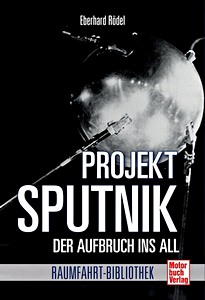Projekt Sputnik - Der Aufbruch ins All (Raumfahrt-Bibliothek)
"Sputnik" war der Name des ersten Satelliten, der erfolgreich in eine Erdumlaufbahn geschossen wurde; ihm folgten noch neun weitere Satellten gleichen Namens.
Am 4. Oktober 1957 startete die Sowjetunion vom Weltraumbahnhof Baikonur aus den kugelförmigen Sputnik 1. Der Start versetzte die westliche Welt in Panik, denn damit hatte die Sowjetunion im Rennen um die Vorherrschaft im Weltraum die Nase vorn.
Ein spannendes Stück Zeit- und Technikgeschichte. Eberhardt Rödel ist Spezialist für die Geschichte der russischen Raumfahrt.
Details
| Autor: | Eberhard Rödel |
|---|---|
| Ausführung: | 128 Seiten, 20.5 x 14 cm, kartoniert |
| Abbildungen: | 140 farbige und s/w-Abbildungen |
| Verlag: | Motorbuch Verlag (D, 2014) |
| Serie: | Raumfahrt-Bibliothek |
| ISBN: | 9783613037199 |

Projekt Sputnik - Der Aufbruch ins All
Sprache: Deutsch
Erhältlich bei Amazon - sichere Zahlung und schneller Versand
Jetzt bei Amazon bestellen







